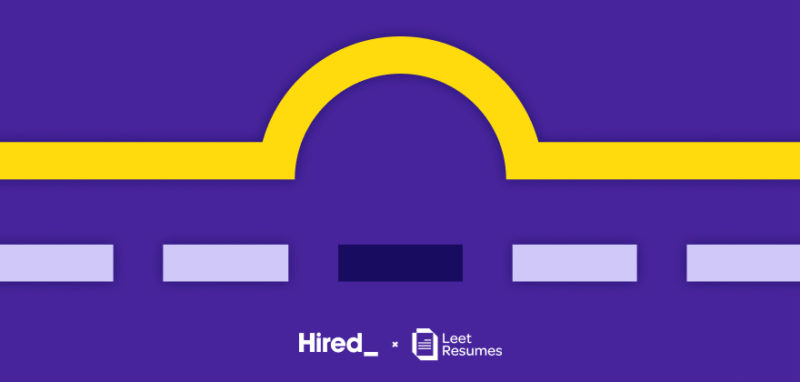
Part of a Layoff? Steps Jobseekers in Tech & Sales Need to Take First
If you’ve ever been laid off you know it’s often an emotional time full of uncertainty – but it doesn’t have to be that way! Welcome to part one of a blog series to help anyone laid off dust themselves off and spin it into a positive. Likewise, if you’re employed but concerned about the stability of your company or role, use this article series to get organized. It will help you feel better prepared regardless. Learn what to do after a layoff and the steps to take to set yourself up for a successful job search.
1. Process Emotions After a LayoffLosing a job often feels like a loss that comes in waves. Some days, you may feel liberated, optimistic, and perhaps excited for what is to come. Other days, you may feel overwhelmed, confused, or just plain sad. It’s a form of grief in many ways.
It’s ok to process your loss, whatever form it may have taken. Recognize you are more than your accomplishments or a job title. Your worth is not tied to your productivity. Remind yourself that nobody is immune, from top performers to leaders, it can happen to anyone.
Give yourself time to process a recent layoff and any series of job rejections. Your feelings may surface unexpectedly, and it’s ok to feel them without letting them overrule your life. Sometimes you need to take a few steps backward before you can move forward.
2. Get Financially Organized Post-LayoffOnce you’ve taken a beat to absorb the news, it’s time to sort out your financials. It helps you feel productive, in control, and more secure during the time between roles. Find the answers to any questions you may have about your 401k, severance pay, filing for unemployment, and your health insurance. Next, take a financial inventory of your situation and set a budget for your current circumstances.
Take Care of Money & Healthcare Matters
After a layoff, there are some loose ends to clear up, such as your final paycheck, any pre-tax withholding accounts, (401ks, employee stock purchase plans, HSAs), unemployment options, and healthcare.
Most of this information should be included as part of the packet from your HR or Employee Success team. It’s easy to be overwhelmed during those meetings, though, so give yourself some grace if you can’t remember some things. Or, if you need to reach out to them afterward.
Here are some financial areas to organize after a layoff:
- Your last paycheck
- Severance pay
- Your 401k
- Unemployment insurance
- Healthcare options
Your Last Paycheck
Things may be a bit different from what you’re used to regarding your final paycheck. If you normally have your checks direct deposited, don’t count on that money effortlessly hitting your bank account as usual. Many states require employers to provide a physical check for the final payment. This gives former employees easy access to paystub information. If necessary, make arrangements with your former employer to pick up your check in person or mailed to your home.
Per the US Department of Labor, there are no federal laws requiring a final paycheck to be given to a former employee immediately following a layoff. Depending on your location, there may be state laws mandating immediate payment when a layoff occurs. Some states only require the final paycheck delivered on or prior to what would have been your next regular payday.
If your company withheld money from your paycheck for an employee stock purchase plan (ESPP), any monies awaiting the next purchase period may be refunded from a separate account. This might be in the form of a second electronic transfer or check. Verify any money withheld and itemized on your final paycheck is included in the refund of the ESPP monies.
To learn more about your state’s final paycheck guidelines, search for your state’s Department of Labor. Many states have made this information available online, or you can contact a representative for assistance.
Severance Pay
Severance pay can offer you a bit of a financial safety net while you’re between roles. However, severance isn’t a guarantee as there are no federal laws mandating it for everyone. A few states have mandatory severance pay laws covering planned layoffs at large organizations. Find this information with your state’s Department of Labor.
Your employment contract or the company’s severance policy in your employee handbook should tell you what to expect as far as severance from your former employer. The amount of severance pay offered is up to the discretion of the company unless you have previously negotiated it as part of your contract.
If the layoff is a result of an acquisition or merger, severance may be determined as part of the agreement and vary from what your company paid before.
Typically, severance pay amounts to one to two weeks of normal pay for every year you worked for the business. In some cases, severance takes the form of paid insurance premiums or other compensation than cash.
What About Your 401k?
If you’ve been paying into a 401k at your former job, you’ll need to decide how to manage this money after an employment separation. You have three options: leave it alone, cash it out, or roll it over. If you’re uncertain about what to do, talking to a financial planner who can thoroughly explain your options may be helpful. Your former employer may also provide resources to determine the next steps.
- Typically, if you have more than $5,000 in your 401k account, you can keep this money in your existing plan. While you won’t be able to continue contributing to these savings, you do retain control regarding how it is invested within the plan. By keeping the money in your existing plan, you won’t have to pay taxes or penalties on a withdrawal and the funds will continue to gain interest.
- A layoff is an uncertain financial time, and some job seekers choose to cash out their 401ks to help with the absence of a regular paycheck. However, withdrawing these funds will also come with penalties and taxes. Consider this a last resort.
- If you’re considering moving your retirement savings out of your former employer’s plan but don’t want to withdraw it and pay penalties, you can roll over your funds to a new account. Many choose to roll over a 401k into an IRA. Or, you can leave the money sitting in your existing account until you land a new position elsewhere. Most plans allow you to roll over funds from an existing 401k to a new one when your employment changes.
Unemployment Insurance
Filing for unemployment benefits can provide much-needed funds when you’re between roles. Requirements vary from state to state, but generally, an applicant must be:
- unemployed through no fault of their own,
- eligible according to the state’s requirements for previously earned wages, and
- able to and actively seeking work.
Many states allow you to apply for unemployment benefits online through the state’s Department of Workforce Development or similar.
If you’ve never filed for unemployment before, it’s okay. You’ve paid into it for probably your entire working life, and there’s no shame in receiving it. It’s there to help bridge the gap during times like these.
Generally, once you’re approved, you’ll receive an amount determined on a sliding scale based on your previous income. There are often requirements involved to continue receiving income from the program, such as weekly reporting of job search activity. Be sure to keep up with any tasks, to avoid the inconvenience of a payment disruption.
Caution, this is, sadly, also an area rife with fraud. Be vigilant and protect yourself from phishing scams, especially through texts and emails.
Healthcare Options
Healthcare uncertainties are a big stressor for many people following a layoff. Depending on your healthcare benefits from your previous role, you may be able to keep your current coverage through the end of the month your layoff took place. Be sure to ask your former employer for clarification on when you can expect this coverage to end.
Make a plan for what you’ll do when you reach this point – you have a few options:
- Opt for COBRA coverage within 60 days of your layoff to keep your existing health insurance.
- Choose an alternative healthcare plan on the Affordable Care Act Marketplace.
- Check with your state to find out if you are eligible for Medicaid or another state-sponsored healthcare plan.
- Join a family member’s employer-sponsored healthcare plan. Regardless of enrollment periods, joining your family member’s plan is categorized as a “life qualifying event” and allows you to enroll outside of the annual open enrollment window.
- Purchase a short-term healthcare plan.
Without a steady paycheck, it’s oh so important to sort out a budget and stick to it. Take an inventory of your existing financial resources to determine what funds you have available. These resources may include:
- Severance pay
- Paid out unused leave days
- Emergency savings
- Partner’s salary
- Retirement accounts
- Company stock
Next, map out your spending and see what your existing budget is like. Seeing where your money is currently going will help you see where adjustments can be made.
There are many resources to help you get assets, liabilities, and even goals all on the same page. Some include Mint, YNAB, and Honeydue.
4. Plan Your Next StepsOnce you have a handle on your emotions and manage the above details, you can start to prepare for the job search ahead. Get into the right mindset and define your mission to increase your chances of success.
Gain Career Clarity
Before you get into the busywork of updating your resume and looking for new positions, take some time to determine what you want and need from your next job. Find clarity regarding the direction you want to see your career take as you move forward. Reflect and identify:
- Your major career goals
- The type of work you enjoy
- What’s important to your career growth
- Your ideal work/life balance?
- Your values and dealbreakers?
Evaluate the Job Market
Once you’ve nailed down the vision for your career, it’s time to evaluate the current job market. Before you begin searching for new roles, understand the present demand for your experience and skills. This information helps you determine if you need to modify salary expectations from your previous position.
Set a Timeline
Establish a timeline for your job search. When can you start? What’s your deadline for finding a new job? Evaluate your present circumstances regarding availability, financial status, and skills development needs to set a realistic timeframe for your search, from scanning job ads to starting your new role.
Update Your Resume and LinkedIn Profile
Before you start an active job search, it’s important to update your information. Now is the time to optimize your resume and LinkedIn profile to best reflect the role you want and help you stand out to recruiters. Here are some resources to help:
- Partners, including Leet Resumes, who helps jobseekers write effective, ATS-optimized resumes for free (tips appreciated), Top Resume, and Enhancv.
- Our Tech Resume Guide with a free downloadable template
- Our Sales Resume Guide series, including specific tips for roles like Account Executives, Sales Development Representatives, and Sales Managers.
- How to Handle an Employment Gap on Your Resume (Flip the Script!)
- Our series especially for women in tech, beginning with Build Confidence and Take Control of your Tech Job Search
- How to Stand Out Behind the Screen: a Guide for Remote Candidates
- Job Searching? Online Networking Strategies to Get You Started
Develop Your Career Story
A layoff often feels devastating at first, but it doesn’t define your career. Before you start your job search, you need to write your career story and build your personal brand.
Decide how you want to frame your layoff when questioned about it. Focus on your experiences, talents, and skills rather than the details of what happened. Be confident in how you will present yourself, and update your social media profiles so they best align with the story you want to tell.
Consider a Side Hustle
A side hustle can be a good solution to earn money during the in-between time after a layoff and before you land a new job. While a side hustle may not become a permanent full-time employment solution at this time, it can help provide some financial security and allow you to continue developing your skills. Whether you have a current side hustle or are considering starting one, think of it as a supplement to job searching.
Ready to Start Your Job Search?Now that you’ve taken the time to emotionally process your layoff, sort out your personal needs, and decide what you want moving forward, you’re ready to find a perfect new role.
Complete your free profile on Hired. Instead of searching for a job, employers search for you. Be sure to optimize your profile for the best matches (tips from the Candidate Experience Team).
Related blog posts

Build Confidence and Take Control of Your Tech Job Search Series
The process of finding a job often feels overwhelming. It’s difficult to determine the best avenue...

How to Ask About Growth Opportunities During an Interview
Growth Opportunities Can Make or Break Your Next Role More than 30 years ago, Dr. Carol Dweck...

How to Handle an Employment Gap on Your Resume (Flip the Script!)
You’re not your work history Addressing an employment gap on a resume is one of the most...

Are Remote Tech Jobs Here to Stay?
The Guide to the Future of Work for Tech Talent What You’ll Learn What’s...

Want More Interviews and Better Matches? 8 Key Tips!
Pro tips to get more interview requests Are you getting matches with your Hired profile, but...

Your Dream Account Executive Job Starts with the Right Resume
Chapter 3 of our Sales Resume Series providing Account Executive Resume guidance. A...
